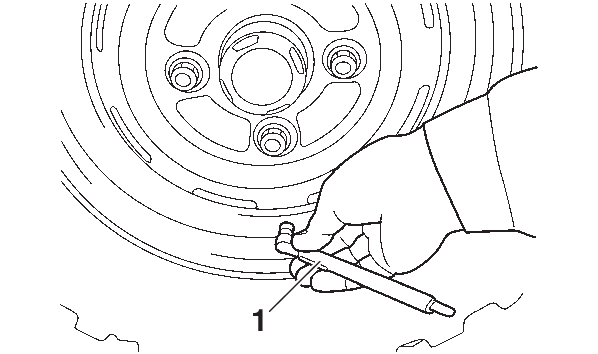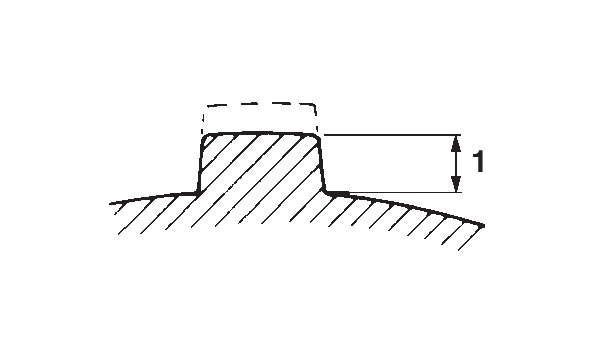Tires
Check and adjust the tire pressure before each ride. Check tires for wear and damage.
Tire pressure

- Tire pressure gauge
Make two measurements of the tire pressure and use the second reading. Dust or dirt in the gauge could cause the first reading to be incorrect.
Tire pressure must be checked and set when the tires are cold. The tire pressure should be the same on both sides, and must be adjusted according to vehicle loading conditions. Set the tire pressure as specified below. WARNING! Operation of this vehicle with improper tire pressure may cause severe injury or death from loss of control or rollover. Tire pressure below the minimum specified could also cause the tire to dislodge from the rim under severe driving conditions.
- VEHICLE LOAD of 0.0–200.0 kg (0–441 lb)
- FRONT: (Recommended)
- 110.0 kPa (1.100 kgf/cm², 16.0 psi)
- REAR: (Recommended)
- 110.0 kPa (1.100 kgf/cm², 16.0 psi)
- Front: (Minimum)
- 103.0 kPa (1.030 kgf/cm², 15.0 psi)
- Rear: (Minimum)
- 103.0 kPa (1.030 kgf/cm², 15.0 psi)
- VEHICLE LOAD of 200.0–510.0 kg (441–1124 lb)
- FRONT: (Recommended)
- 117.0 kPa (1.170 kgf/cm², 17.0 psi)
- REAR: (Recommended)
- 200.0 kPa (2.000 kgf/cm², 29.0 psi)
- Front: (Minimum)
- 110.0 kPa (1.100 kgf/cm², 16.0 psi)
- Rear: (Minimum)
- 193.0 kPa (1.930 kgf/cm², 28.0 psi)
- Vehicle load is total weight of operator, passengers, accessories, cargo, and trailer tongue weight. Do not exceed maximum vehicle load of 510.0 kg (1124 lb).
Tire inspection

- Tire tread depth
When the tire tread depth has worn to 3 mm (0.12 in) replace the tire. If the tire has a nail or glass fragments in it, or if the sidewall is cracked, replace the tire.